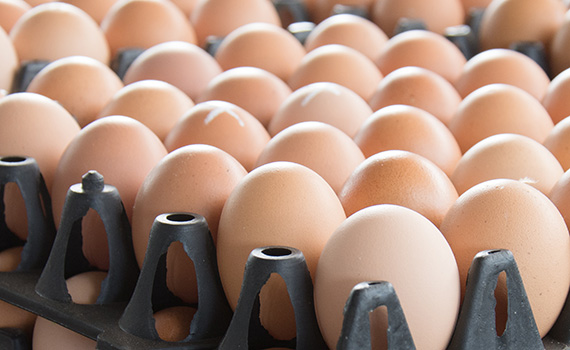E. coli vaccination can lead to higher egg numbers, study suggests
Vaccinating birds against Escherichia coli can have production benefits, as well as protecting birds from the disease, researchers have found.
Avian pathogenic E. coli (APEC) is a costly disease in poultry and can affect broilers and breeders as well as layers.
In long-lived birds it can be damaging for profitability as it can hit after the upfront cost of rearing birds to their point of lay, according to Manuel Da Costa, DVM, PhD, associate director of outcomes research at Zoetis.
“In layers, specifically, you tend to see more APEC starting about week 18 to the peak of production, about 25 to 30 weeks,” Da Costa told Poultry Health Today. Molting is another time that APEC can typically present, but it can be found at any point during the production cycle.
One recent study looked at how much protection a live E. coli vaccination gave laying hens against the same strain (078).
The study took place in Indonesia, where 078 and 02 strains found in the country were isolated and brought to experimental facilities.
Birds were split across two houses. In one, birds were challenged at 23 weeks, and the other birds were challenged at 44 weeks.
Each house had birds grouped in cages by vaccination status (vaccinated versus non-vaccinated) and challenge type (078, 02 and non-challenged).
Vaccination took place at 2 weeks and 12 weeks of age via spray. One week post-challenge birds were sampled for APEC lesion evaluation.
The difference in mortality was stark — about 10 times lower in the vaccinated flock, Da Costa said. “It really pays off to vaccinate birds if you have an APEC challenge in your area,” he added.
But, crucially, egg production was also evaluated up to 45 weeks in the late-challenge house, and vaccinated birds were far more productive.
“It was interesting to see that in terms of production, vaccinated hens had, on average, produced about 11 eggs more per hen when compared to the non-vaccinated,” Da Costa said.
“The production differences were from the beginning. And this is interesting because these birds were only challenged at 44 weeks of age.
“I think there was probably some E. coli present in the environment, and those birds were exposed to just environmental E. coli, and the vaccine advantage showed from the beginning. It’s interesting to see that vaccination — exposure to that vaccine early on — really paid off.”
Results from this research also suggested that the early environmental exposure to E. coli in the environmental flock was not enough to stimulate an immune response and encourage protection.
Alongside vaccination, managing bird environments is another important way to control APEC, Da Costa said.
“Have good environmental conditions — quality of air, good sanitation, chlorination of the water, making sure that water is sanitized — will be important.”
APEC can be a primary cause of disease but is often a secondary infection, he added.
©2021 Zoetis Services LLC. All rights reserved. BIO-00323
Posted on January 12, 2022













